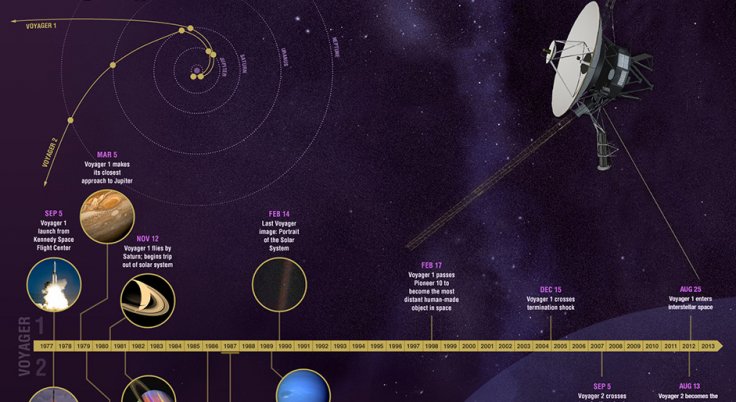
The only human-created object present in interstellar space, NASA's spacecraft Voyager 1, has been fired up for the first time in the last 37 years. The spacecraft has been flying in space for the last 40 years. Tiny devices, known as thrusters, help the spacecraft to orient itself, so it can set up communication with Earth.
Once fired, these thrusters shoot tiny "puffs" that last for just milliseconds in order to delicately turn around the spacecraft. Its antenna then points at Earth. All these tiny devices were inactive since 1980 and now the scientists at the space agency have been able to set four of them back to life.
"With these thrusters that are still functional after 37 years without use, we will be able to extend the life of the Voyager 1 spacecraft by two to three years," the project manager for Voyager at NASA's Jet Propulsion Laboratory (JPL) in the US, Suzanne Dod said.
The thrusters that the Voyager 1 has been using are called "attitude control thrusters" and the engineers at the space agency spotted that they had been degrading since the year 2014. As they get old, the thrusters need more puffs to generate a similar amount of energy than before.
At 13 billion miles from Earth, there's no mechanic shop nearby to get a tune-up. NASA scientists examined and considered all the options and calculated the ways to make it work again. Finally, they all agreed on one possible solution – try to make the over 40-years-old thrusters work so that the spacecraft, situated 13 billion miles away from Earth, can start its orientation.
"The Voyager flight team dug up decades-old data and examined the software that was coded in an outdated assembler language, to make sure we could safely test the thrusters," said the chief engineer of JPL, Chris Jones.
In its heydays, Voyager 1 has flown by planets, such as Saturn, Jupiter, and also some of their significant moons. The engineers used trajectory correction maneuver (TCM) thrusters to accurately detect the spacecraft's location. TCM thrusters are similar in functionality and size as the "attitude control thrusters" and they are spaced at the back of Voyager 1.
Also Read: Stephen Hawking, Supercomputer and Black Holes: What more do we need to explore Universe?
The Voyager 1 engineers finally managed to fire up four TCM thrusters of the spacecraft first time in 37 long years on November 28. They also tested if they can start the orientation process of the spacecraft. The result took 19 hours and 35 minutes to reach Earth.
The next day, on November 29, the engineers got to know that the TCM thrusters have performed perfectly. Now, NASA is planning to switch the TCM thrusters on again in January.









